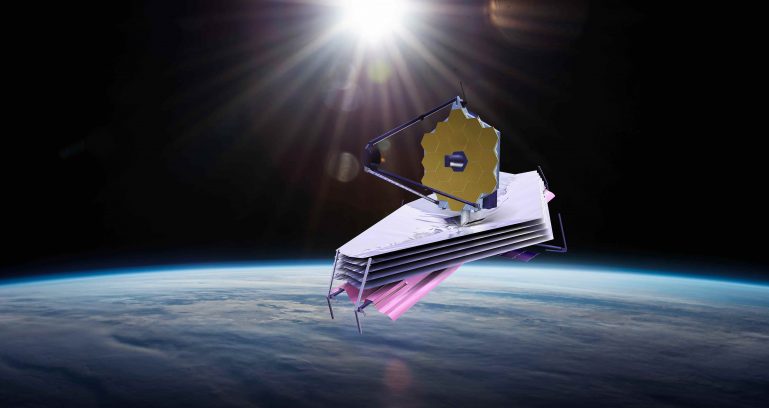NASA’s James Webb Telescope Captures Colourful Cartwheel Galaxy

The first images of the colour-rich Cartwheel galaxy were captured by NASA’s James Webb Space Telescope in July, but the public only recently got to see them. The images, created using the Near-Infrared Camera and the Mid-Infrared Instrument (MIRI), use the combination of two different cameras to reveal details that were otherwise invisible. Infrared light, which is invisible to Hubble, is filtered out by the two different telescopes, and in this case, it reveals individual stars and their pockets of star formation.
The image was created by combining the data obtained by the Near-Infrared Camera (NIRCam) and the Mid-Infrared Instrument (MIRI) on board the James Webb telescope. The NIRCam used to capture the ring-shaped spiral galaxy, while the MIRI was used to view the detailed structures in the dust. Both instruments are capable of revealing the presence of hydrocarbons and silica dust.
The Webb’s powerful infrared sensitivity and resolution allow it to view objects that Hubble and other space telescopes can’t reach. Using infrared astronomy, the new telescope will also help us study the possible presence of life on distant planets and other astronomical bodies. By seeing these objects, we will be able to understand how the universe works, and whether we should look there for our future homes.
The two ring structures in the Cartwheel Galaxy are the result of collisions on a galactic scale. The inner ring is brighter and contains giant star clusters. The outer ring is much fainter and has been extending into space for 440 million years. The bright core is home to the galaxy’s youngest star clusters. The outer ring, on the other hand, is dominated by star formation and supernovas.
The colourful Cartwheel Galaxy was shaped by the collision of two galaxies in a high-speed spiral. The resulting galaxy is now 500 million light-years away. The ring galaxy was not visible to humans in the past, but NASA’s James Webb Space Telescope has finally managed to take a detailed image of it. Observations have also revealed new details about the central black hole and the star formation in the galaxy.
The Hubble Space Telescope had a previous look at the Cartwheel Galaxy, but the dust had obscured the view. The images captured by the Webb Space Telescope were much clearer because of the Near-Infrared Camera’s infrared imaging capabilities. The images revealed young stars forming in the outer ring of the galaxy, providing a fascinating look at the history of the Cartwheel Galaxy. The images show that the Cartwheel Galaxy is still in a transitory stage and will undergo further transformations.
The colour-coding of the Webb Telescope’s images is much more advanced than the Hubble’s. The Webb’s images feature much more vivid colors. This is due to the NIRCam, which was developed by 25 people over the course of 11 years. Its sensitivity to infrared light allows it to see objects much further than the Hubble telescope.
